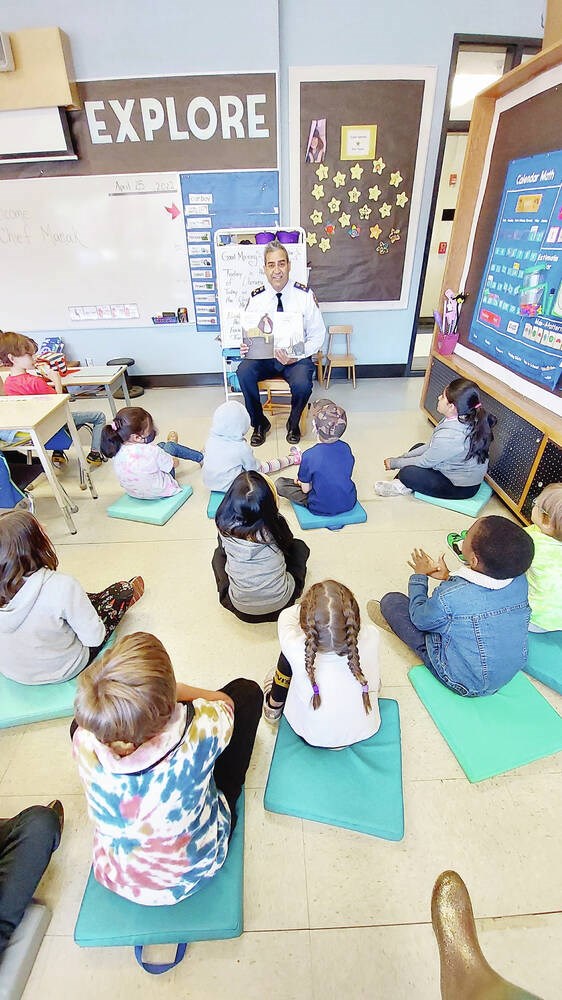Victoria Police Chief Del Manak says he takes offence at “generalized stereotypes” of police in a letter from the Greater Victoria Teachers’ Association calling for an end to school-liaison officer programs.
The GVTA letter says police officers should not be allowed to wear their street uniforms or carry guns on school grounds.
Manak said in a statement that the letter “paints a picture of officers surveilling students and patrolling hallways looking to make arrests” — something that he said is simply not true.
“The role of [school police-liaison officers] is to build positive relationships and trust with students, which organically establishes mentorship and role models,” Manak said. “This is incredibly important in keeping our youth safe.”
That can help reduce the exploitation of youth, either from sexual exploitation or recruitment into gangs — something he called “a legitimate rising concern” in Greater Victoria.
The Greater Victoria School District’s school-liaison officer program was cancelled in 2018 during a time of staff shortage, but Manak said last year that he considered the cancellation a mistake. He said he has had a number of discussions with the department’s human-resources staff about resuming the program.
The letter from GVTA president Ilda Turcotte called for the district school-liaison officer program to be officially cancelled, and for a committee to be formed to look at how to deal with school mental-health services, violence in the workplace and harm-reduction measures relating to drug use.
It said the GVTA’s position is based on research from teachers and organizations across the country, as well as a November recommendation from B.C. human rights commissioner Kasari Govender that the programs be ended until their need can be proven.
“Public conversations over the last several years have highlighted that Canada’s policing and criminal-justice systems have been founded on and continue to perpetuate systemic racism,” the letter said. “For our schools to take meaningful anti-racist action, we must not ignore this legacy of the ongoing harm caused by police.”
The letter said research shows school-liaison officer programs “cause harm that negatively affects the safety, rights and sense of belonging that many marginalized people experience in school.”
That can include those who are Black, Indigenous, People of Colour (BIPOC), LGBTQ or disabled, it said.
The letter said police should not attend school functions that could be “triggering” for BIPOC individuals, such as Orange Shirt Day or Pink Shirt Day, and that any time officers appear in a class, there should be two weeks’ notice and students should have the right not to attend.
Manak said that as a BIPOC person, he has dealt with many BIPOC communities, and the contents of the GVTA letter “do not reflect what these communities want for our youth.”
The chief said removing police presence in schools in the “sweeping manner” espoused by the GVTA “is irresponsible and would negatively impact the safety and well-being of students.”
Sooke School Board chair Ravi Parmar said the Sooke School District has several school-liaison officers and maintains a good working relationship with West Shore and Sooke RCMP. “As a board chair, I welcome their participation in our schools.”
Saanich police recently combined their school and crime-prevention initiatives into a new Community Liaison Section, with five officers working at a total of 53 public schools, private schools and other educational institutions within the detachment’s jurisdiction. Under the new arrangement, there is no longer a dedicated liaison officer for each site.
A former school-liaison officer himself, Manak called the role one of the highlights of his career, and noted that officers in the program are “hand-selected” for their ability to deal with youth.
Beyond the school-liaison program, he said there are “countless examples” of positive experiences when he and other officers visit schools.
He said he enjoys dropping by his alma maters, George Jay Elementary School and Central Middle School, and will be at George Jay in April to read to students during Literacy Week.
>>> To comment on this article, write a letter to the editor: [email protected]



